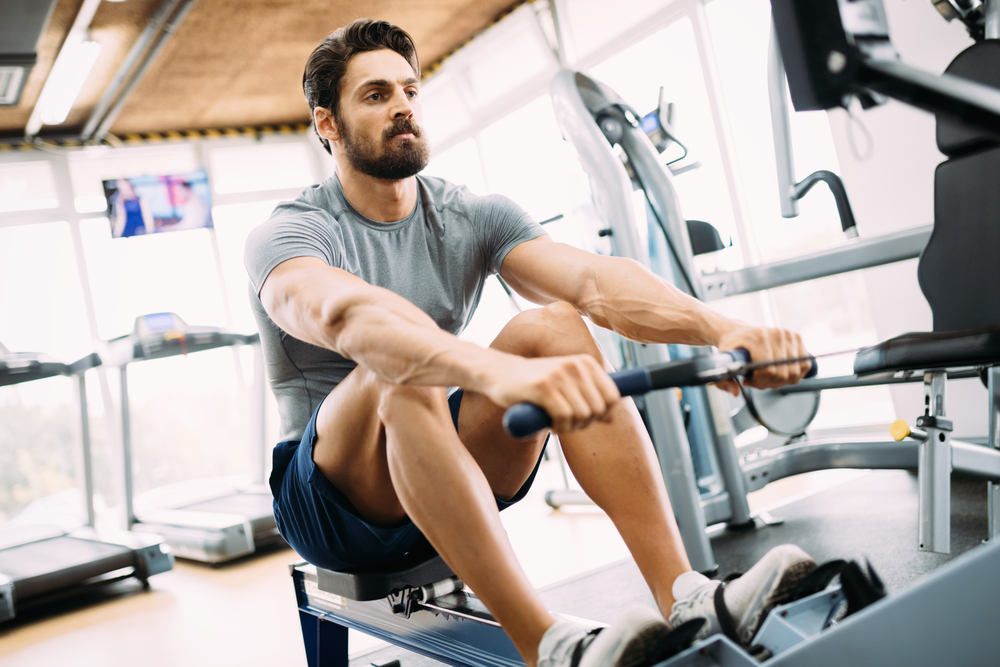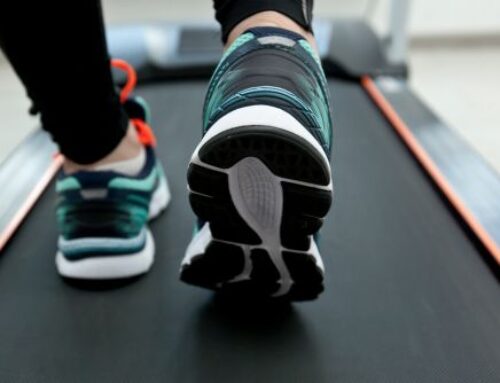Exercise is the Source of Multiple Health Benefits!
Many associate the normal aging process with hypertension, chronic disease and heart disease. However, while these conditions are common in an aging population, many studies have demonstrated they are not inevitable outcomes of aging. Heart disease affects approximately 1 in 13 Americans over the age of 18.1 It continues to be the leading cause of death in the U.S., as 1 in 4 deaths is associated with heart disease.2
Mortality from coronary heart disease has been on the decline, likely attributable to improved treatments following heart attack, but the number of individuals living with the disease has not. Those at higher risk for heart disease have high blood pressure, smoke, are overweight, drink excessive amounts of alcohol and are physically inactive.3
In the U.S., the percentage of adults over age 20 with hypertension is near 33 percent.4 The condition is responsible for 3.7 million outpatient hospital visits each year, and 32,000 deaths from essential hypertension and hypertensive renal disease. Hypertension is a leading cause of cardiovascular disease, with a significant contributing factor being physical stiffening of the large arteries.5 A recent study finds exercising may reverse the aging of your heart and blood vessels as measured by the stiffness of your arteries.6
Activity Reduces Risk of Arterial Stiffness
Recent research published in the Journal of Physiology7 analyzed the effect of differing amounts of exercise over 25 years on arterial stiffening in older adults. The study enrolled 100 people in their 60s and evaluated their exercise history throughout their lives.8 After measuring arterial stiffness, they found those who exercised two to three times a week for at least 30 minutes had more youthful middle-sized arteries supplying blood to their head and neck.
However, the most impressive results were in those who exercised four to five times a week. They had healthier large central arteries as well as healthier midsized ones. Data found there was little effect on the smaller peripheral arteries in either of the groups.9
Researchers measured the larger arteries supplying the chest and abdomen but did not take into account confounding factors, such as diet, education and social background. While these factors may have had an impact on the results, lead author from the Institute for Exercise and Environmental Medicine, Dr. Benjamin Levine commented:10
“This work is really exciting because it enables us to develop exercise programs to keep the heart youthful and even turn back time on older hearts and blood vessels.”
In another study, researchers found relatively short aerobic exercise in older adults could reduce arterial stiffness in those who have Type 2 diabetes, hypertension or hypercholesterolemia.11 One study put participants through a 12-week combined exercise program and found improvements in arterial stiffness, functional capacity and body composition in postmenopausal women who suffered stage 1 hypertension.12
Individuals with metabolic syndrome have a threefold increased risk of mortality from cardiovascular disease, in part due to an increase in arterial stiffness. In a study published in the Journal of Applied Physiology,13 data revealed pathophysiological changes associated with metabolic syndrome were improved with aerobic exercise training, thus lowering cardiovascular risk. Another study14 demonstrated intermittent moderate-intensity exercise training for eight weeks could reduce arterial stiffness.
Arterial Stiffness May Lead to Early Death
Years of research has shown how exercise benefits your arterial system no matter your age. Arterial wall stiffness is dependent on several structural elements within the wall, including muscle, elastin and collagen.15 These components bear pressure as the wall is distended. Diagnosis of arterial stiffness includes arteriosclerosis and atheromatosis, often combined with atherosclerosis. This is a generalized thickening and stiffening of the wall, often related to high blood pressure.
Arterial stiffness may be substantially increased in individuals with hypertension, independent of their blood pressure level.16 Stiffening as the result of structural vascular changes and endothelial dysfunction may be associated with vessel impairments in animal models of hypertension. An increase in stiffness has a major effect on pulse pressure — the difference between systolic and diastolic pressure — and on kidney function and cardiovascular risk.
The risk is greater in those who suffer hypertension and/or Type 2 diabetes, as well as arterial stiffness. Individuals who are obese may also suffer an increase in arterial stiffness, associated with higher risk for cardiovascular morbidity and mortality.17 This stiffness may be independent of blood pressure level, ethnicity and age, as the pathophysiological mechanism linking arterial stiffness in the aorta to abdominal adiposity is not fully understood.
In a study evaluating the risk of cardiovascular disease with arterial stiffness and stroke in apparent healthy subjects, the researchers found aortic pulse wave velocity, an indication of arterial stiffness, is an independent predictor of coronary heart disease and stroke in those who appear healthy.18 Arterial stiffness is an emerging powerful predictor of your risk of death in a number of clinical, age-related conditions and has been identified as a contributing factor in:19
Hypertension
Kidney disorders
Heart attack
Liver disorders
Cerebral white matter disease
Stroke
Type 2 diabetes
Neurodegenerative disorders
Many Are Not Active Enough to Enjoy Health Benefits
With nearly 300 bones in the human body, humans were designed to move. For hundreds of years, that’s exactly what happened. However, following rapid technological advances in the mid-20th century, everyone began sitting more frequently. In a study from Vanderbilt University evaluating over 6,300 people, researchers estimated the average American spends 55 percent of their waking hours in sedentary behaviors.20
This number jumps further if you have a desk job. Some estimates are the average person sits 12 hours a day and inactivity contributes to 3.2 million deaths each year.21 With increasing numbers of hours spent in a chair, it is more challenging to meet healthy exercise requirements. A study by the Centers for Disease Control and Prevention (CDC) estimates nearly 80 percent of adult Americans are not getting enough exercise each week, likely setting themselves up for years of health problems.22
Data collected from over 450,000 adults ages 18 and older reveal only 20 percent of those surveyed met the total recommended amounts of exercise.23 Those who were most likely to exercise were between the ages of 18 and 24 and those least likely were ages 65 and older. In these groups, 51 percent reported they met the physical activity guidelines for aerobic activity but only 21 percent met the guidelines for both aerobic and muscle-strengthening.24
In another survey including nearly 500 U.S. adults, most reported they wanted to be in better shape and looking good was very important to them. However, despite those feelings, only 31 percent reported making exercise a habit and 45 percent admitted they weren’t active at all.25
Data from the American Time Use Survey tells the same story.26 The most commonly performed activity, after eating and drinking, was watching TV or movies. Just under 5 percent of those interviewed said they engaged in activities such as swimming, running or strength training.
Exercise — Source of Multiple Health Benefits
As fewer are engaging in vigorous exercise, fewer are also enjoying the accompanying health benefits. Regular fitness has a wide range of positive effects, including lowering your risk of cancer and stroke, improving your cardiovascular health and slowing loss of bone density often associated with age.27 Exercise is linked to better brain health and emotional well-being. In a study published in the journal Circulation, researchers found those who exercised, even without weight loss, tended to live longer.28
Another study published in the American Journal of Health Promotion29 evaluated data from more than 6,000 Americans and found even small amounts of physical activity adding up to 30 minutes a day could be as beneficial as longer workout sessions at the gym. Exercise also helps you to control your weight and reduce your risk of Type 2 diabetes and metabolic syndrome.30 Exercise improves your balance and strength, which in turn improves your ability to do daily activities and prevents falls.
Research also demonstrates high-intensity interval training triggers protection of energy-producing mitochondria and effectively delays aging at the cellular level.31 In the study, researchers split 36 men and 36 women into two age groups: those between 18 and 30 and those between 65 and 80. These groups were then further split into those who participated in high-intensity interval biking, strength training using weights, or a combination of interval and strength training.
Once data collection was complete, the team found although strength training was effective at building muscle mass, those participating in high-intensity interval training had the greatest improvement at the cellular level.32 The researchers compared proteomic and RNA sequencing data, finding exercise promoted cells to make more RNA copies coded for mitochondrial protein. The younger volunteers carrying out interval training experienced up to a 49 percent increase in their mitochondrial capacity.
However, even more impressive, the older group experienced up to a 69 percent improvement. In addition, those who participated in interval training improved their insulin sensitivity and lowered their risk of developing diabetes. The researchers believe the study demonstrated how exercise may improve the function of specific organelles, supporting previous research finding exercise enhanced mitochondrial electron transport chain activity and was related to an increase in mitochondrial biogenesis.33
Benefit From Four Minutes Three Times a Day
[embedyt] https://www.youtube.com/watch?v=tZgqVkXC57o[/embedyt]
This simple four-minute exercise is a new concept for fitness designed to release nitric oxide into your blood. Dr. Zach Bush is triple board-certified with expertise in internal medicine, endocrinology and metabolism, and believes his four-minute workout is anaerobically efficient and works better the more you do it, within reason. It may be hard to believe, but in those few minutes, you can get some of the same benefits as if you’d worked out in the gym for an hour.
This short series of exercises is a new version of high-intensity interval training designed to release nitric oxide, a soluble gas and free radical stored in the lining of your blood vessels. Nitric oxide is made by your body to enhance blood vessel dilation as you work anaerobically to deliver more oxygen and nutrients where they are needed. The exercise is designed to be done three times a day with at least two hours between sessions to allow time to restore your nitric oxide reserve.
Hand weights are not necessary or even recommended in the beginning, although you can use them later if you’d like. It’s important to focus on form and speed initially. There are four movements done in three sets of 10 repetitions. As you become more comfortable, you can increase it up to 20 repetitions.
Most importantly are your form and your breathing. As you exercise, do not breathe through your mouth. Keep your mouth closed and breathe only through your nose. Mouth breathing can lead to over breathing, chronic hyperventilation, depletion of carbon dioxide levels and reduced blood circulation. The goal of this exercise is to release higher amounts of nitric oxide, making your blood vessels more pliable and deliver greater amounts of oxygen to your muscles. Mouth breathing works in opposition to these goals.
In the video above, I demonstrate this series of exercises, also known as the Nitric Oxide Dump. You can perform these exercises no matter where you are — I even do them at the airport as I’m waiting for my luggage. You might think you look a little odd, but remember, it’s an extremely effective workout and totally free. Best of all, it will help you take control of your health.
- 1 ATrain Education, Coronary Artery Disease
- 2, 3 Centers for Disease Control and Prevention, Heart Disease Facts
- 4 Centers for Disease Control and Prevention, Hypertension
- 5 ACTA Pharmacologica Sinica, 2010;31(10):1267
- 6, 9 The Journal of Physiology, May 20, 2018, The Effect of Lifelong Exercise Frequency on Arterial Stiffness
- 7 Journal of Physiology, May 20, 2018, doi.org/10.1113/JP275301
- 8, 10 BBC, May 21, 2018
- 11 Diabetes Care, 2009;32(8):1531
- 12 Menopause, 2017;24(3):262
- 13 Journal of Applied Physiology, 2014;116(11):1396
- 14 Journal of Medical Ultrasonics 2013;40(2):119
- 15 News Medical Life Science, What is Arterial Stiffness?
- 16 Nature Reviews Cardiology, 2018;15:97
- 17 Journal of the American Society of Nephrology, 2006;17(4):s109
- 18 Circulation, 2006; 113:657
- 19 Life Extension, Reduce Your Risk of Arterial Stiffness
- 20 JustStand.org, Sitting by the Numbers
- 21 JustStand.org The Facts
- 22, 24 Centers for Disease Control and Prevention Exercise of Physical Activity
- 23 CBS News, May 3, 2013
- 25 UPI News, June 20, 2017
- 26 Harvard Health Publishing, October 6, 2010
- 27 Everyday Health, 10 Amazing Benefits of Exercise
- 28 Circulation, 2011;124:2483
- 29 American Journal of Health Promotion 2013, 27(3)
- 30 Centers for Disease Control and Prevention, Physical Activity and Health
- 31 Science Daily, March 7, 2017
- 32 Medical News Today, March 8, 2017
- 33 The Journals of Gerontology, 2006;61(6):534





Leave A Comment